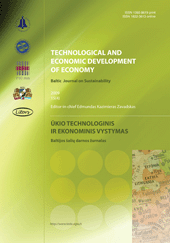Geographic Communication for Sustainable Decisions
Geographic Communication for Sustainable Decisions
Author(s): Giedrė Beconytė, Audrius KryžanauskasSubject(s): Economy
Published by: Vilnius Gediminas Technical University
Keywords: cartography; geography; maps; geographic methods; GIS; sustainable development; decision making
Summary/Abstract: Information communication technologies are widely used to support sustainable development. As both nature and society exist and develop in the geographic space, a good decision making can hardly be imagined without a prior thorough analysis of spatio-temporal distribution and spatial correlation of diverse ecological, economical and social parameters. Wherever such geospatial relationships are concerned, the methods of geography as of a geographic information science are commonly applied, among which cartography is the most efficient information communication method. Different levels of representation of geographic information, such as databases, geographic information systems (GIS), maps, atlases and Spatial Data Infrastructures can be easily and conveniently used for different steps of planning. More than that, maps have a hidden potential to reveal unknown spatial patterns and trends and the process does not require any specific technological skills from the user. Therefore it is very important to include geographic/cartographic dimension into regional and national sustainable development strategies, so that spatial structures, diversities, similarities and geographic determination are always taken into account. To facilitate the process of geographic decision making, we develop a uniform model of description of geographic methods that could be used online and provide suggestions on which of the known methods could be efficiently applied.
Journal: Technological and Economic Development of Economy
- Issue Year: 2010
- Issue No: 4
- Page Range: 603-612
- Page Count: 10
- Language: English

